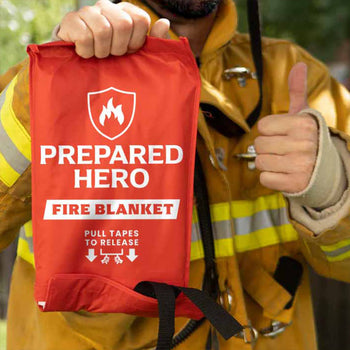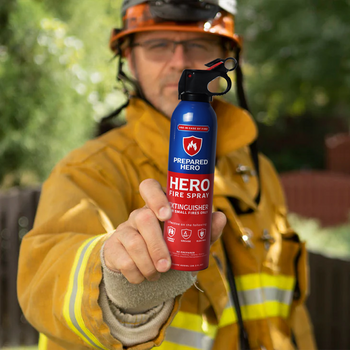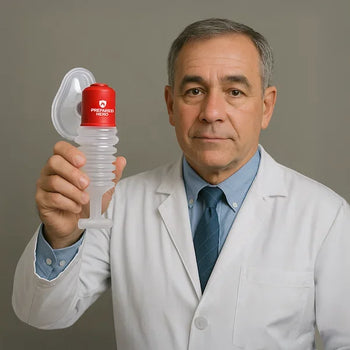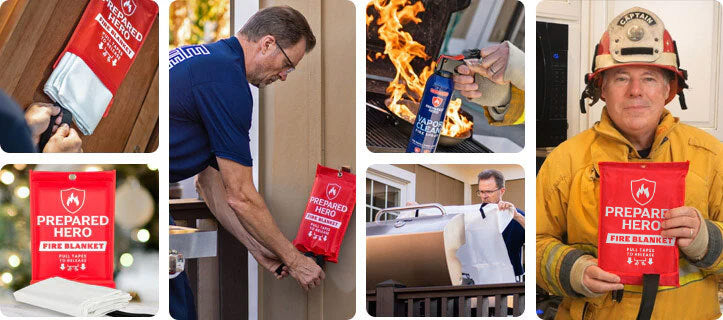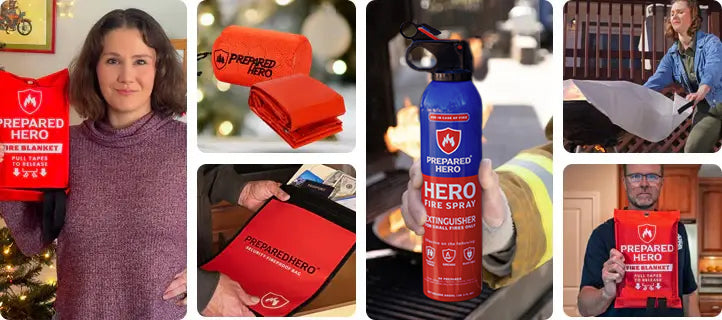Where you put your smoke detectors matters just as much as installing them. Proper placement makes sure they can detect...
Fire extinguishers have different symbols that tell you what fires they can handle. If you’ve ever seen a mix of letters, numbers, and shapes on an extinguisher, they’re not just random—they’re fire safety codes.
Knowing what these symbols mean helps you pick the right extinguisher in an emergency. Remember, using the wrong one could make a fire worse. Find out what these symbols indicate now.
What Are the Signs on a Fire Extinguisher?

Fire extinguishers have labels with letters and numbers that tell you what types of fires they can put out and how effective they are.
The letters indicate the fire class: A for ordinary combustibles like wood and paper, B for flammable liquids and gases, C for electrical fires, D for combustible metals, and K for grease fires. Each fire type requires a specific extinguisher because using the wrong one can make it worse.
The numbers before the letters show how powerful the extinguisher is. For Class A, the number represents the equivalent amount of water it can release. Each “A” equals 1.25 gallons of water. For instance, a 10A extinguisher can put out a fire requiring 12.5 gallons of water.
For Class B, the number indicates how many square feet of a fire it can handle. For example, a 5B extinguisher can cover a 5-square-foot fire. Class C, D, and K extinguishers don’t have numbers because they’re rated based on their effectiveness in handling specific fire types rather than the size.
For example, a fire extinguisher labeled "1A:10B:C" means it can handle a small Class A fire, extinguish a 10-square-foot Class B fire, and safely put out electrical fires. Understanding these ratings helps you choose the right extinguisher for different fire hazards at home, work, or in the garage.
Types of Fire Extinguishers
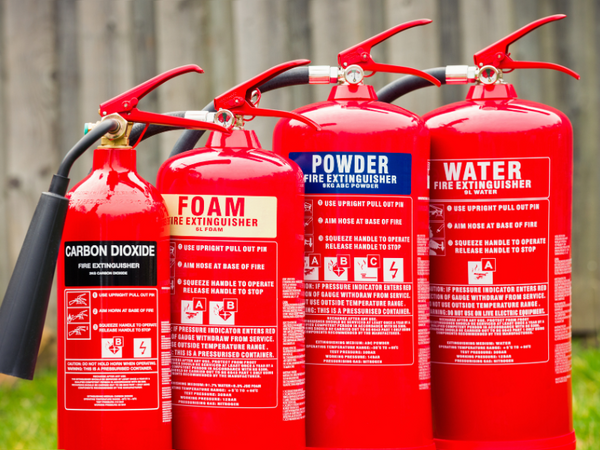
Different fires require different methods to extinguish. Using the wrong fire extinguisher makes things worse. Here are the types of fire extinguishers and how they work:
Water Fire Extinguisher
Water fire extinguishers work best against Class A fires. These fires involve ordinary materials like paper, wood, fabric, plastic, and cardboard. The said extinguishers work by cooling the burning material and slowing down the fire until it goes out. However, they should never be used on grease fires and electrical fires because they can make them worse.
A water fire extinguisher expels water with the help of high-pressure gas. When you pull the safety pin and squeeze the handle, the gas pushes water out of the nozzle. The water then cools the flames and lowers the temperature until the fire is out. The effective range is about four to six feet.
Water Mist Fire Extinguisher
Water mist extinguishers are more versatile. They work on Class A, B, and C fires. Some models can even handle electrical equipment up to 1,000 volts. They’re also more eco-friendly than other fire extinguisher types.
This type of extinguisher sprays deionized water through a special nozzle, creating a fine mist. This mist cools the fire, reduces oxygen, and suffocates the flames. The tiny water droplets also leave no residue, so they’re safe for electronics, books, and other delicate items.
Wet Chemical Fire Extinguisher
Wet chemical fire extinguishers are used for Class K fires caused by burning oil and fat. They can also be used for Class A fires, though water and foam extinguishers are more common.
Wet chemical fire extinguishers contain potassium, which helps lower the temperature of the fire and prevent it from spreading. When sprayed, the fine mist reacts with the burning oil and fat. It then forms a soapy layer that cools, suffocates, and prevents the fire from reigniting.
Powder Fire Extinguisher
Powder extinguishers are one of the most versatile fire extinguishers. They can handle Class A, B, C, and D fires. They’re great for mixed fire risks but shouldn’t be used in small spaces because inhaling the powder can be dangerous.
This type of extinguisher releases a fine powder made of baking soda or similar chemicals. The powder melts over the flames and creates a barrier between the fuel and oxygen. It also protects nearby objects from radiated heat and prevents reignition.
Foam Fire Extinguisher
Foam extinguishers work on Class A and B fires. They work like water extinguishers but also form a barrier to prevent reignition. However, you can’t use them on grease and metal fires.
A foam extinguisher cools the fire while forming a thick layer over the burning liquid. This cuts off oxygen and prevents the flames from spreading. As the foam builds up, it keeps the fire from reigniting.
Carbon Dioxide Fire Extinguisher
Carbon dioxide (CO2) extinguishers are best for Class B and C fires. They don’t leave any residue, so they’re perfect for offices, server rooms, and medical facilities.
This extinguisher releases pressurized carbon dioxide gas, which displaces the oxygen that fuels the fire. The gas is also extremely cold, which helps cool the burning material and extinguish the fire quickly.
What Do the Labels on Fire Extinguishers Mean?
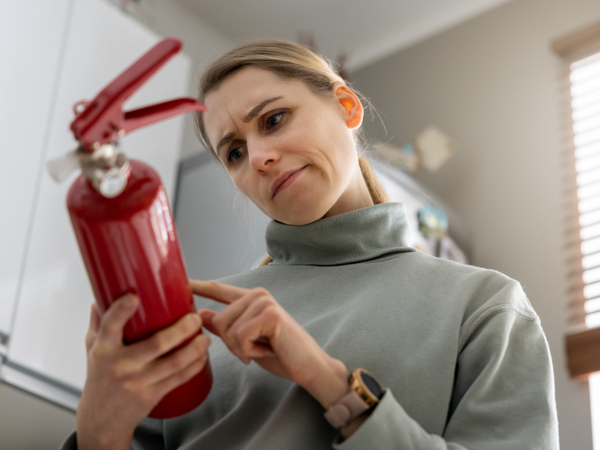
Fire extinguishers have labels with letters and numbers that tell you what kind of fire they can put out. Understanding these labels lets you choose the right extinguisher in an emergency. The letters also indicate the type of fire the extinguisher is designed to handle, while the numbers show its effectiveness.
Letter A: Ordinary Combustibles
The letter A on a fire extinguisher means it is designed for Class A fires, which involve common materials like wood, paper, and fabric. These fires are the most frequent in homes and offices. They’re often caused by things like candles tipping over, sparks landing on fabric, and overheated appliances.
Class A fires also spread quickly and produce toxic smoke, so they need to be put out fast. Water fire extinguishers are the most common Class A fire extinguishers because they cool down the flames and remove heat, one of the three elements of the fire triangle. Some extinguishers use water mist, which is safer for places with delicate equipment, while others use foam or powder to smother the fire.
Letter B: Flammable Liquids and Gases
The letter B means the extinguisher can handle Class B fires, which involve flammable liquids and gases like gasoline, propane, and paint thinner. These fires start when a liquid or vapor meets a heat source, like a spark or open flame.
They’re common in kitchens, garages, and industrial settings where chemicals and fuels are stored. Class B fire extinguishers use water mist, foam, carbon dioxide, or dry powder.
Letter C: Electrical Equipment
The letter C indicates that the extinguisher is safe to use on Class C fires, which involve electrical equipment. These fires start from faulty wiring, overloaded outlets, or malfunctioning appliances. Water should never be used on a Class C fire because it conducts electricity and increases the risk of electrocution. Class C fire extinguishers use non-conductive agents like water mist, carbon dioxide, or dry powder to safely smother the flames.
Letter D: Combustible Metals
The letter D is for fires involving combustible metals like magnesium, sodium, and aluminum. These fires burn at extremely high temperatures and can react violently with air or water. Class D fires are most common in industrial settings where metals are processed, such as welding shops and foundries.
Class D fire extinguishers use special dry powder that forms a barrier and cuts off the fire’s oxygen supply. Using water or foam on a Class D fire can cause an explosion or worsen the flames.
Letter K: Grease
The letter K is used for fires involving cooking oils, fats, and grease. When cooking oil gets too hot, it can ignite instantly. Water makes grease fires worse by causing the burning oil to splash.
Class K fire extinguishers contain wet chemicals like potassium acetate, which cools the fire and creates a soapy barrier to prevent reignition. These extinguishers are designed for homes and commercial spaces like food trucks and restaurants.
Numbers on Fire Extinguishers
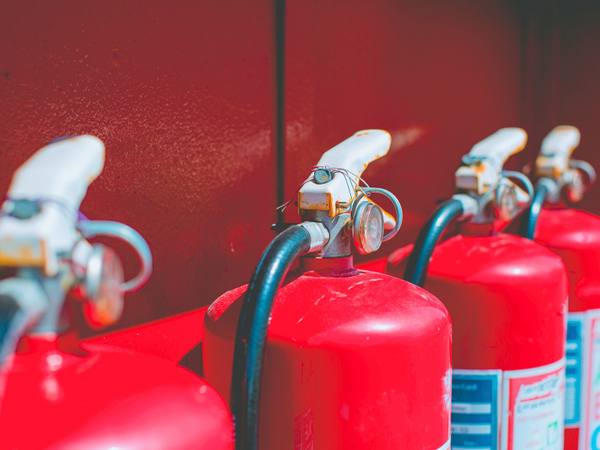
The numbers on a fire extinguisher indicate its effectiveness in putting out a fire. Class A extinguishers have a number before the letter A. This indicates how much fire they can handle in relation to gallons of water. Each A rating is equal to 1.25 gallons of water. For example, a 20A extinguisher can fight a fire that would require 25 gallons of water. A higher number means a stronger extinguisher that can handle a larger fire.
On the other hand, the numbers on Class B extinguishers tell you how many square feet of fire they can cover. For instance, a 10B extinguisher can handle a fire covering 10 square feet, while a 20B extinguisher can put out a fire covering 20 square feet. The larger the number, the bigger the fire it can fight.
Class C extinguishers do not have numbers because their main purpose is preventing electrical shock. Their effectiveness is based on their ability to put out electrical fires without conducting electricity. A Class C extinguisher is tested to make sure it will not create a shock hazard when used on live electrical equipment.
Class D extinguishers also don’t have numbers. Instead, they’re rated based on the type of metal fire they can handle and the amount of extinguishing agent required. Different metals react in different ways, so these extinguishers are made for specific situations.
Class K extinguishers follow a similar system. They do not have numbers because they are tested using a standard fat fryer fire. The test ensures the extinguisher can put out the fire without causing oil splashes or reignition. Instead of a numerical rating, the focus is on making sure the extinguisher works on kitchen fires.
What Does a Green Triangle Mean on a Fire Extinguisher?

A green triangle on a fire extinguisher means it’s meant for Class A fires. These fires are caused by common materials like wood, paper, cloth, and plastic. Class A extinguishers usually contain water or dry chemicals, depending on the type. The triangle symbol is typically paired with the letter "A" inside it, so it's easy to recognize.
For example, if you have a 2 1/2-gallon pressurized water extinguisher marked with 2A, it can handle a fire about 2 feet by 2 feet in size (like a small pile of wood or paper). It’s a great choice for dealing with fires caused by things you’d find around the house or office. Knowing the symbol helps you pick the right extinguisher for the right type of fire so you’re prepared during an emergency.
Is There a Better Option?
While fire extinguishers help a lot, they can be expensive, heavy, and hard to store. They might also leave a mess that’s hard to clean up.

A fire spray is an easy-to-use, lightweight, and affordable alternative to fire extinguishers. Prepared Hero’s fire spray is also biodegradable and non-toxic. Unlike a fire extinguisher, you can safely use it around your family and pets.
Here’s a table summarizing the differences between Prepared Hero’s fire spray and a regular fire extinguisher:
| Hero Fire Spray | Regular Fire Extinguisher |
| Lightweight, easy to carry | Heavy, hard to carry |
| Easy to store | Needs more space for storage |
| Can put out all types of fire at home | Can only put out specific types of fire |
| 100% biodegradable | Mostly made of non-biodegradable materials |
| Non-toxic | Toxic |
| Easy to clean | Hard to clean |
| Safe for kids and pets | Not safe for kids and pets |
Another alternative is a fire blanket, which depletes the fire’s oxygen supply. By doing this, it puts out small fires in seconds. It also doesn’t leave a mess because it simply covers the fire.

Unlike fire extinguishers, Prepared Hero’s fire blanket doesn’t expire. You can reuse it as many times as you want as long as it’s not damaged. Plus, you can use it to save someone on fire.
Here’s a table summarizing the differences between Prepared Hero’s fire blanket and a regular fire extinguisher:
| Prepared Hero’s Fire Blanket | Regular Fire Extinguisher |
| Lightweight, easy to carry | Heavy, hard to carry |
| Affordable | Expensive |
| Doesn’t expire | Expires |
| Easy to store | Needs more space for storage |
| Non-toxic | Toxic |
| Doesn’t leave a mess | Leaves a mess |
| Safe for kids and pets | Not safe for kids and pets |
| Can be used on humans | Can’t be sprayed on humans |
Do you want reliable, easy-to-use, and affordable tools to put out small fires before they become raging infernos? Check out Prepared Hero’s fire prevention tools here, and get up to 51% off on certain items. Stay prepared, hero!


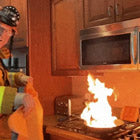 Fire
Fire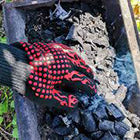 Safety
Safety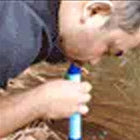 Survival
Survival Protection
Protection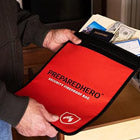 New
New
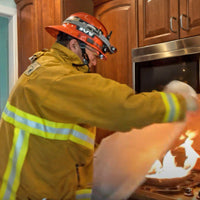 Fire
Fire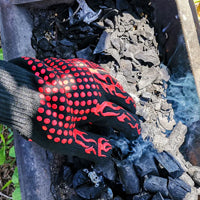 Safety
Safety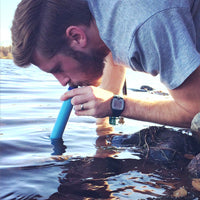 Survival
Survival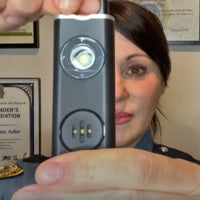 Protection
Protection New
New
